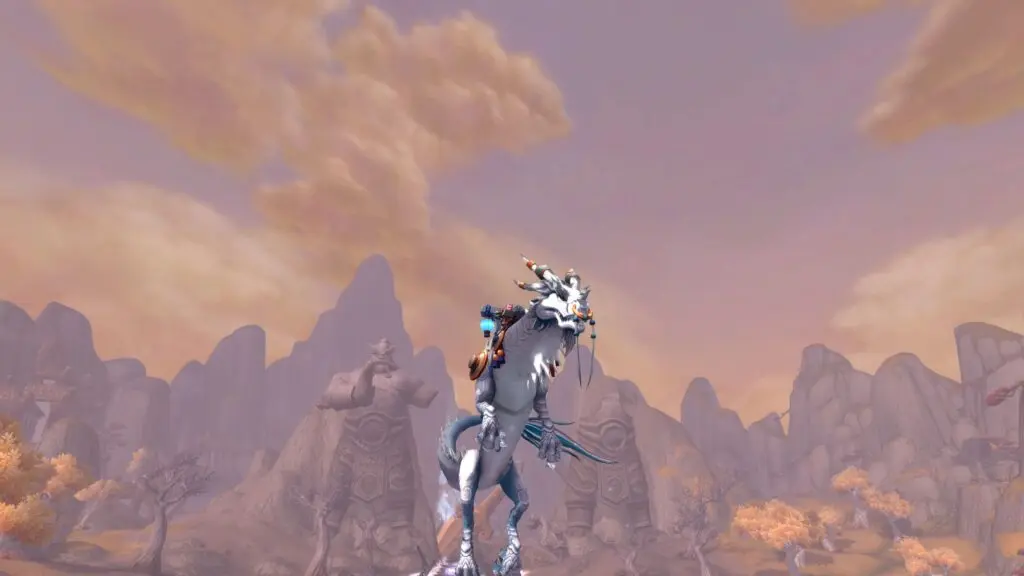Mount Investment Guide: Which Rare Drops Hold Value

Not every rare-looking mount compounds value. Sustained demand depends on durable scarcity plus prestige signaling that resists mechanical obsolescence. This framework ranks mounts by long-horizon retention characteristics so you allocate time and capital into assets that actually preserve relative status.
1. Value Retention Framework
Three pillars drive multi‑patch resilience:
- Structural Scarcity: Hard-coded low drop rate, removed source, or heavy time gating.
- Prestige Signaling: Visible proof of achievement difficulty or historical participation.
- Thematic Uniqueness: Distinct silhouette / animation set un-replicated by newer content.
A mount holding 2+ pillars tends to outpace inflation; if only cosmetic uniqueness without scarcity, risk of dilution rises each content cycle.
2. Scarcity Vectors
- Pure Low Drop RNG: Legacy raid/dungeon bosses with ≤1% baseline—stable but slow supply decay.
- Time-Gated Rotation: Limited weekly attempt or event windows compress acquisition throughput.
- Removed / Unobtainable: Seasonal or retired challenge mounts—instant hard cap on future supply.
- Compound RNG Chains: Multi-layer drops (rare item → summon → mount) amplify effective scarcity.
- Achievement Bundle Locks: Meta achievements requiring coordinated completion; barrier persists past patch relevance.
3. Investment Archetypes
Legacy Prestige (Stable)
- Removed raid challenge rewards
- Historic PvP season end mounts
- Pro: Zero new supply
- Risk: Minimal trading velocity
Event-Locked Rotation
- Annual holiday / world event RNG
- Pro: Seasonal demand spikes
- Risk: Pity system additions
Patch-Limited Meta
- Current raid end boss mount (drop % nerfs later)
- Pro: High prestige early
- Risk: Later accessibility buffs
Undervalued Grind Bottleneck
- Reputation / currency sink mounts
- Pro: Predictable trajectory
- Risk: Future catch-up tokens
Cosmetic Synergy (Speculative)
- Mounts pairing with transmog sets releasing soon
- Pro: Short-term visual meta lift
- Risk: Rapid novelty decay
4. Evaluation Matrix
Score each candidate 1–5 (higher is stronger) across dimensions; prioritize composites ≥14/20.
- Drop Scarcity: Effective acquisition rate (accounts/week).
- Supply Trajectory: Is supply still expanding or capped?
- Prestige Persistence: Will difficulty memory survive nerfs?
- Visual Differentiation: Unique rig / VFX / skeleton.
- Volatility: Lower volatility improves store-of-value role (inverse scored).
5. Data Signals & Tracking
Minimal manual log recommended—avoid paralysis. Columns:
- Date
- Mount Identifier
- Observed Market Range (low–high)
- Estimated Weekly New Supply
- Prestige Event (Y/N)
- Notes (nerfs, visibility boosts)
After 6–8 weeks you can model slope of supply expansion; flattening slope while price floor holds = confirm hold candidate.
6. Acquisition Strategies
- Early Patch Window: Farm high end boss mounts pre-nerf; accept low volume but high future scarcity.
- Seasonal Event Stacking: Run multiple alts through limited RNG events; consolidate wins.
- Targeted Legacy Clears: Prioritize sub-1% drop instances with fast lockout resets.
- Currency Sink Monitoring: Acquire before announced cost reductions / rep catch-ups.
7. Exit Timing Scenarios
- Prestige Dilution: Publicized nerf or accessibility buff incoming.
- Visual Supersession: New mount with similar rig + higher particle density.
- Seasonal Spike: Demand wave (roleplay / transmog contests) lifts floor temporarily.
- Liquidity Need: Reallocate into higher margin short-cycle markets.
8. Risk Management
- Diversify between at least 3 scarcity vectors.
- Avoid overexposure: single mount ≤ 25% of portfolio value.
- Document acquisition proofs (screens) for dispute clarity.
- Maintain liquid buffer for opportunity pivots.
9. TL;DR Quick Reference
Retention Pillars
- Scarcity
- Prestige
- Thematic uniqueness
Archetypes
- Legacy prestige
- Event-locked
- Patch-limited
Signals
- Flattening supply slope
- Stable floor pricing
- Unmatched silhouette
Exit Cues
- Nerf / access change
- Visual supersession
- Seasonal spike
Framework is analytical guidance only; adapt to live patch shifts and realm-specific pricing norms. Respect game terms and avoid exploit-based acquisition methods.